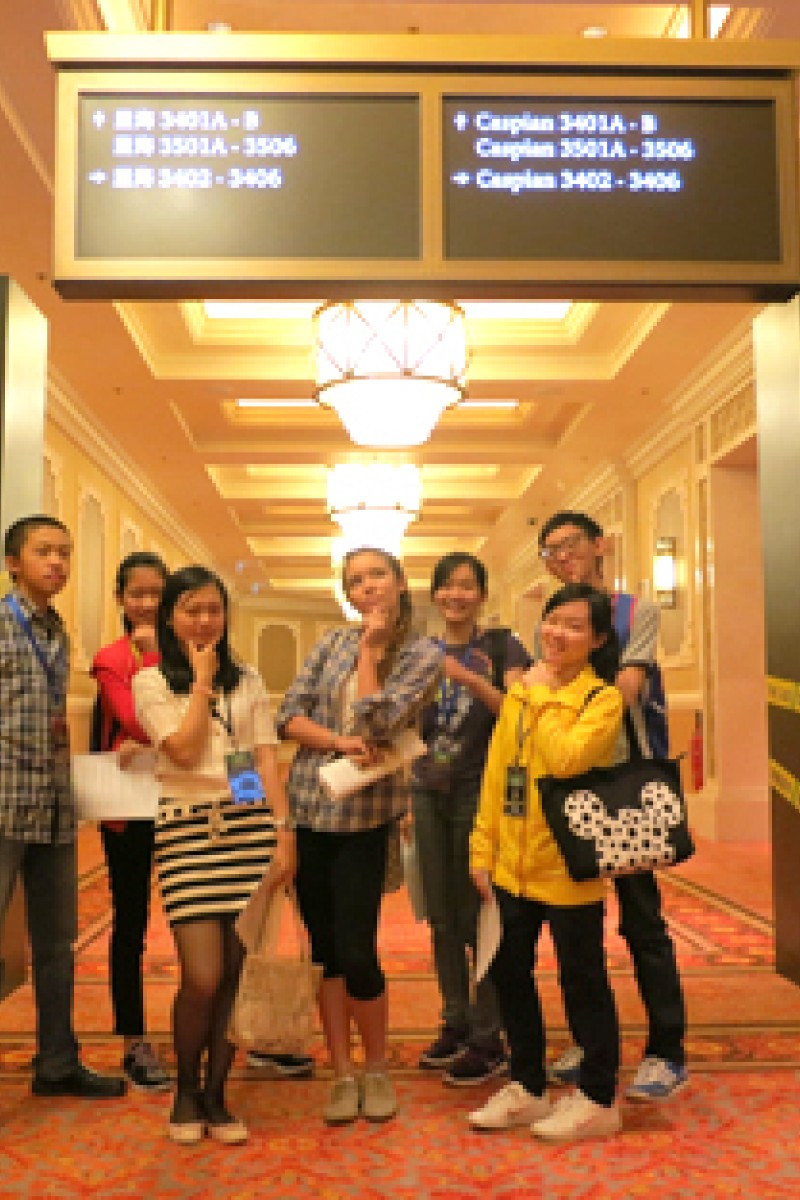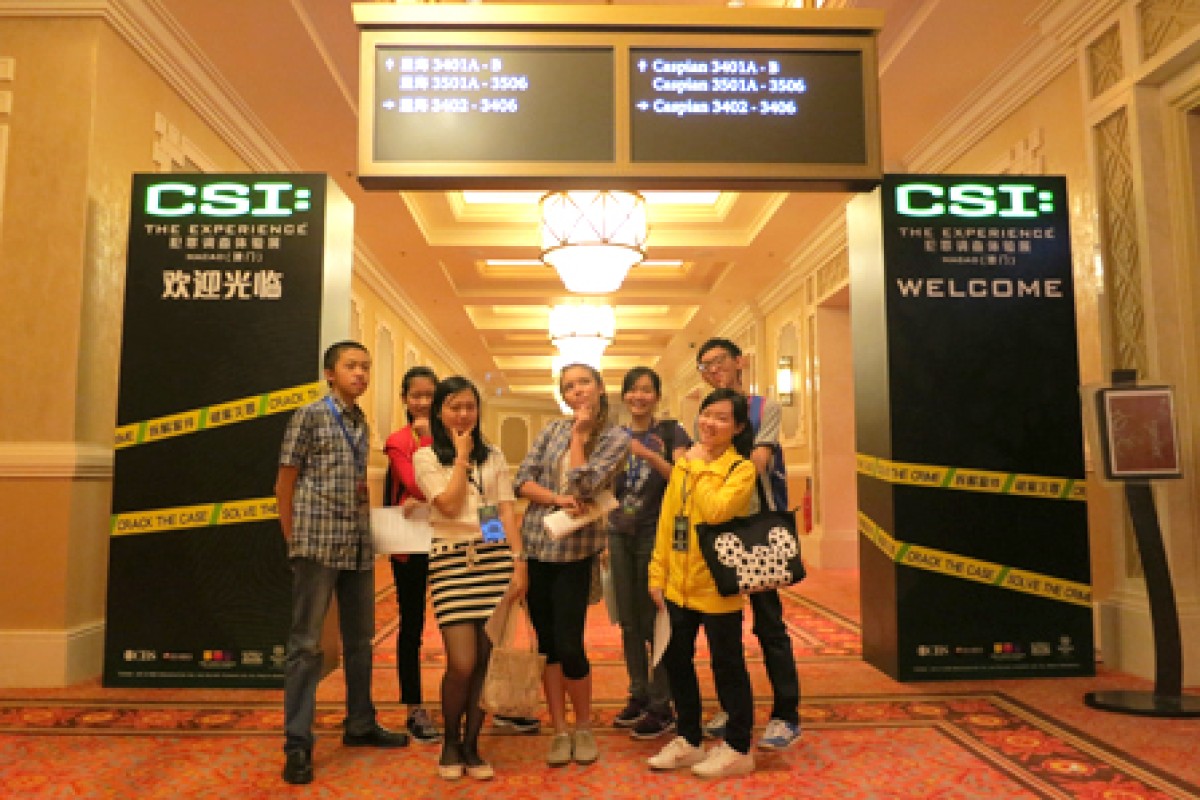
At CSI: The Experience in Macau, anyone can be a detective - even our junior reporters, who found evidence and investigated 'murders'
 From left: Henry Lui, Minnie Yip, Nola Yip, Ruthie Laidler, Areon Chan, Gigi Wong, William Cheng.
From left: Henry Lui, Minnie Yip, Nola Yip, Ruthie Laidler, Areon Chan, Gigi Wong, William Cheng.With three different crimes scenes, the reporters felt like they were real investigators, finding clues and solving mysteries. They learned about - and tried out - the advanced scientific techniques used by real crime scene investigators and forensic scientists today.
The exhibition runs until June 15. For more information, visit www.cotaiticketing.com. Here's what our lucky seven thought of their experience ...
Crime Scene 1: A House Collided
From the bloody handprints and blood-stained pillow, to the half-eaten pizza, this scene was littered with evidence.
To reveal the culprit behind this murder, we analysed footprints, fibres, blood stains and DNA.
Henry Lui
Paying close attention to detail is crucial to be a good investigator.
"Every contact leaves a trace." This is what I learned from a video at the exhibition. It is therefore very important for investigators to pay close attention to any possible clues at a crime scene.
I was really surprised to discover how much one can figure out from the shape and pattern of the victim's blood spatter.
Gigi Wong
Not only did we learn lots of cool scientific skills which we would never have learned at school, but the crimes scenes were really exciting and had great stories behind them. Even with all the evidence we collected (including fingerprints), it seemed that the solution might be very different from what we had in mind.
Nola Yip
Crime Scene 2: No Bones About It
Here we investigated a human skeleton found in a desert canyon. Although we could only find a few clues because the person had been dead for a very long time, we solved the mystery using forensic science.
William Cheng
In a remote desert with no solid clues to be found, this may seem like a hard crime to solve. If that's what you think, you need to work harder to be a good investigator! Even small clues - a bullet hole or a single hair on the skeleton - can help crack a case.
Areon Chan
Finding clues in sand is tough work.
Crime Scene 3: Who Got Served?
In this case, a dead woman was found sprawled in an alley. I learned that anything can be a clue, even a fly on the victim's arm! The fly helped show how long the woman had been dead.
Minnie Yip
This was the most realistic scene out of the three. In the lab, we looked at tyre tracks, matched up DNA profiles and analysed drugs. Then we moved to the autopsy table and got a report from the coroner.
Ruthie Laidler
Young Post organises regular activities for our junior reporters. If you wish to join, send your name, age, school and contact details to [email protected] with "jun rep application" in the subject field.